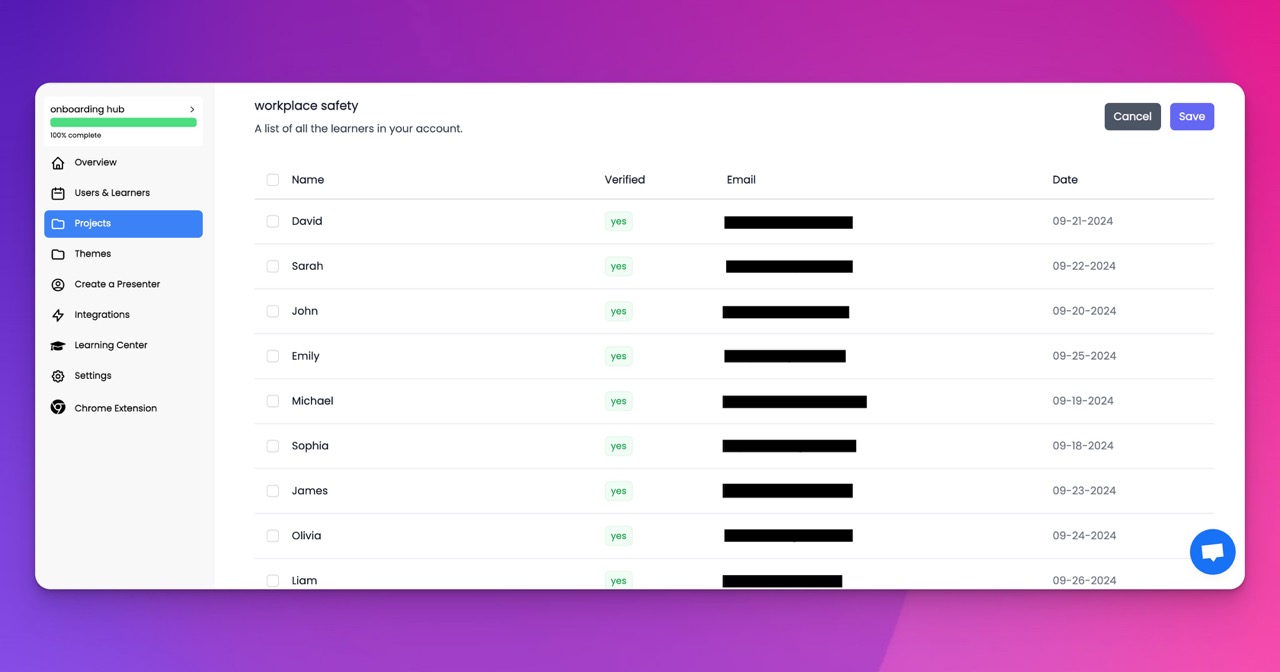🎉 Trainday now integrates with Zendesk and Hubspot 🎉 Trainday now integrates with Zendesk and Hubspot 🎉 Trainday now integrates with Zendesk and Hubspot
🎉 Trainday now integrates with Zendesk and Hubspot
🎉 Trainday now integrates with Zendesk and Hubspot
Contact
"Transforming Employee Onboarding: Harnessing The Power Of AI Avatars For Enhanced UX And Benefits"
Title: Transforming Employee Onboarding: Harnessing the Power of AI Avatars for Enhanced UX and Benefits
Introduction:
In today's technology driven era, businesses are constantly seeking innovative ways to streamline processes and enhance user experiences. One area that often receives much attention is employee onboarding. Traditional methods of onboarding can be time consuming, impersonal, and inefficient. However, with advancements in artificial intelligence (AI), the integration of AI avatars has emerged as a transformative solution. This blog post explores the potential benefits of harnessing the power of AI avatars for employee onboarding, including improved user experience (UX) and enhanced overall efficiency.
1. Personalized Onboarding Experience:
AI avatars enable organizations to offer a personalized onboarding experience to new employees. These virtual assistants can provide tailored guidance, answering questions about company policies, procedures, and culture. With their ability to simulate human conversation, AI avatars can create an interactive and engaging environment, fostering a sense of belonging right from the start.
2. 24/7 Availability and Consistency:
Traditional onboarding processes often rely on human trainers or mentors who may have limited availability. In contrast, AI avatars are accessible 24/7, ensuring that new hires can access vital information at their convenience. Moreover, AI avatars offer consistent and accurate responses, eliminating the risk of varying information provided by different trainers. This consistency promotes a standardized onboarding experience, crucial for establishing a strong foundation for new employees.
3. Gamification for Engagement:
AI avatars can integrate gamification elements into the onboarding process, making it more interactive and enjoyable for new hires. Through quizzes, challenges, and rewards, employees can actively participate in their training, enhancing retention and knowledge acquisition. Gamification also encourages healthy competition among new hires, fostering a sense of camaraderie and teamwork right from the start.
4. Streamlined Administrative Tasks:
AI avatars can automate administrative tasks associated with onboarding, such as form filling, document signing, and policy acknowledgment. This automation reduces the burden on HR personnel, allowing them to focus on strategic initiatives and personal interactions. By streamlining these processes, AI avatars accelerate the onboarding timeline, ensuring new employees can quickly become productive contributors to the organization.
5. Continuous Learning and Development:
Beyond the initial onboarding phase, AI avatars can continue to support employees' learning and development. By providing access to relevant training materials, resources, and personalized recommendations, these virtual assistants empower employees to further their knowledge and skills. This continuous learning approach helps foster a culture of growth and development within the organization.
Conclusion:
The integration of AI avatars in employee onboarding holds immense potential to transform the process into a more personalized, efficient, and engaging experience. By offering a consistent and accessible source of information, AI avatars enhance the overall user experience for new hires. Moreover, these virtual assistants streamline administrative tasks, encourage active participation through gamification, and support continuous learning and development. As businesses strive to optimize their onboarding practices, harnessing the power of AI avatars is undoubtedly a game changer that can revolutionize the way organizations welcome and integrate their new employees.
Accelerate Compliance.
Deliver OSHA-Ready Courses Instantly.
Empower your team with data-driven training solutions tailored to your industry's safety standards. Stay compliant, reduce risks, and boost productivity with AI-powered course creation.
